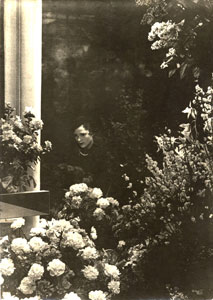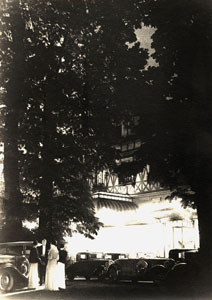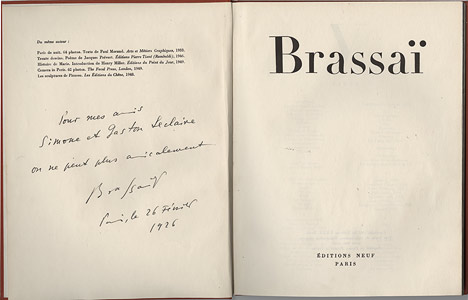Brassai Real name: Gyula Halasz Born 9 September 1899 in Brasov, Transylvania.
Brassai took his name from his birthplace and it means someone who comes from Brasov. He used the name all his adult life and is known throughout the world as Brassai. He was of Hungarian ethnic origins. Brasov in Transylvania has been a part of Romania since the end of the First World War, and that region is still largely populated by ‘Romanain-Hungarians’. Two of these became well known in the film industry: Bela Lugosi and Gabriel Pascal. When the Austro-Hungarian Empire was dismantled after the War, most of its territories were distributed amongst a number of nations. It was at this time that Transylvania returned to its earlier identity as part of Romania. Brassai had served in the Austro-Hungarian cavalry for the last year of the War, 1917-1918. After he settled in Paris in 1924, Brassai never returned to his homeland, remaining in exile for the rest of his life. His parents continued to live in Brasov but joined him for long visits in Paris. In 1949 Brassai became a French citizen, having been a stateless person since 1947. He fell in love with a French woman, Gilberte Boyer, and they married in 1948. Gilberte worked closely with her husband as he pursued his photographic career, helping him develop prints in his dark-room, and often writing descriptions of the subjects and personalities. It was also in 1949 that a book with 207 photographs of Picasso’s sculptures was published, with photographs by Brassai. He and Picasso became friends and the latter asked him to photograph his work for this volume. Brassai was a frequent visitor to Picasso’s studio and there he took several portraits of the artist. 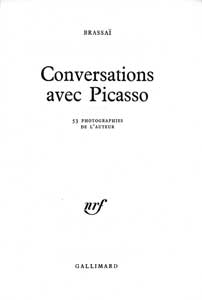 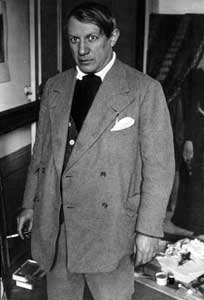 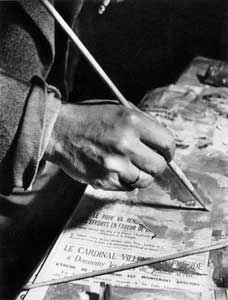 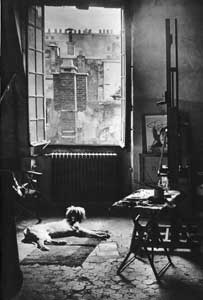 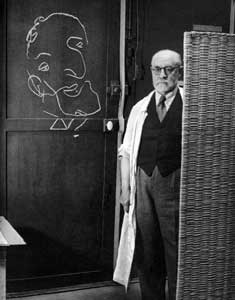 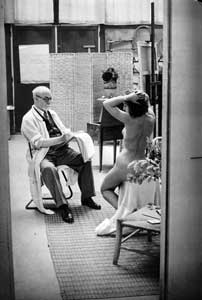 Brassai has become one of the leading photographers of the twentieth century with collectors all over the world seeking his work. In an era which produced several brilliant and inspired photographers, not least Brassai’s friend Man Ray, he was able to capture a quality of magic in the atmosphere, bordering on the supernatural. Many of his pictures were taken at night or in fog, a frequent condition in Paris in the early part of the twentieth century. Even his day time photographs capture a moment of eerie transition between the mundane and the surreal. He is on the doorstep of another world where time stands still. Light becomes spectral as if it is the breath of an invisible power. Figures seem set in amber. Wet cobbles seem to slither and flow. A Master of capturing the ordinary, Brassai saw things as they were but transmuted the scene through his use of the lens into something outside the ordinary. Brassai was a familiar figure prowling round Paris after dark with his camera and tripod and heavy bag of glass photographic plates. He was sometimes accompanied by Ernest Hemingway, Henry Miller, or Leon Paul Fargue together exploring the more shady and infamous streets and cafes of the city. Brancusi, the Romanian sculptor, was also a friend and Brassai’s own sculptors were heavily influenced by Brancusi. Brassai also designed several stage sets based on his photographs, including Jean Cocteau’s ballet Phaedre. To see some original correspondence from Brassai, from the Foundation's Archives, please click here (PDF, 0.5MB) 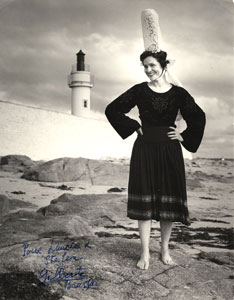 Brassai portrait of his wife Gilberte 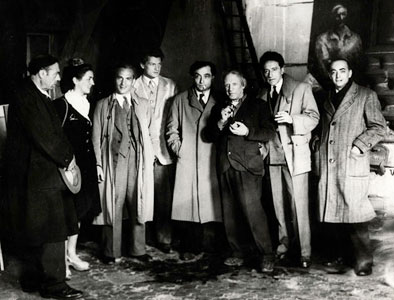 Brassai’s photo of a gathering at Picasso’s studio. Left to Right: Ortiz de Zarate, Francoise Gilot, Fenosa, Jean Marais, Pierre Reverdy, Picasso, Jean Cocteau and Brassai himself, at Picasso's atelier in the Rue des Grands-Augustins on the Left Bank in Paris Brassai’s photo of a gathering at Picasso’s studio. Left to Right: Ortiz de Zarate, Francoise Gilot, Fenosa, Jean Marais, Pierre Reverdy, Picasso, Jean Cocteau and Brassai himself, at Picasso's atelier in the Rue des Grands-Augustins on the Left Bank in Paris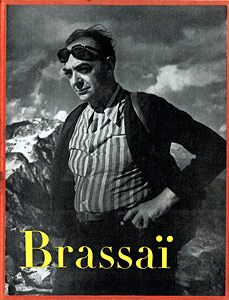 Brassai book cover Brassai book cover |
||||
 |
|
||
|
|||
